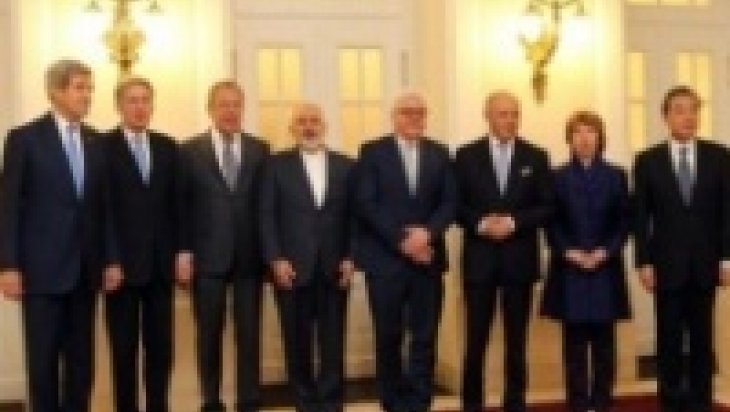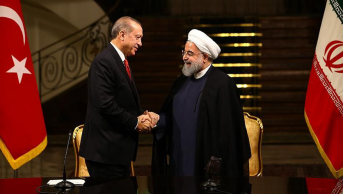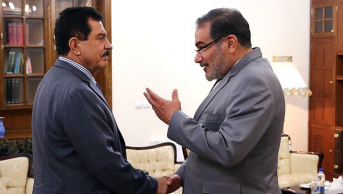Outcome of Vienna Talks: Negotiations to Continue

The last round of the ongoing negotiations between Iran and the P5+1 (The Permanent Five of the United Nations Security Council – the US, China, Britain, France, Russia – and Germany) for one year was held on 17-24 November in Vienna. The last day for the pre-set date for reaching a final decision in negotiations was 24 November. Days before this date, the ministers of foreign affairs of the countries involved in negotiations moved to Vienna in order to solve the issues that locked the talks. But no positive outcome has produced in this respect. However, the parties agreed to continue the negotiations by extending the Joint Action Plan (JAP), which they signed in November 2013 in order to reach a comprehensive agreement regarding the Iranian Nuclear Program until 1 July 2015.
Within the scope of JAP, it was envisaged that international sanctions imposed on Iran would be eased in return for Iran’s slowdown in its nuclear activities and lowering its stocks of enriched uranium. It was also envisaged that the parties would reach a comprehensive agreement within this period. Since parties could not reach a conclusion in the first six-month period of negotiations, they decided to extend the JAP for another term in July 2014. JAP was extended for the second time with the decision taken on 24 November in Vienna.
The main reason of the decision to resume negotiations is the parties’ common interest in continuing the meetings. While Iran has benefited from the easing in sanctions during the negotiation process, the US managed to slow down Iran’s nuclear program. Secondly, the conclusion of negotiations without a comprehensive agreement would have weakened the power of both Iranian and the US governments and the internal political rivals who have been opposing the negotiations from the beginning would have gained prominence. Furthermore, breakdown of negotiations would have caused the Iran-US relations to severe, which is not desired either by Barack Obama or by Hassan Rouhani. Moreover, none of the parties in negotiations wanted to be the first to leave the negotiation table and assume the responsibility for the failure of the negotiations. Lastly, although a comprehensive agreement has not been reached yet, the parties announced, without providing any details, that they covered a lot of ground during the talks. These statements can initially be regarded as statements that will legitimize the decision to resume negotiations. If it actually is, the parties who refrained from declaring and facing with ‘failure of negotiations’ and its responsibility may have to face it more vehemently six months later. However, it is also likely that positive steps might have been taken within the previous period although its content is not clear now. In fact, it is hard to assume that the parties have taken the decision to resume the talks just to give the impression that they are continuing the negotiations. Thus, the optimistic opinions and positive expectations of the parties were effective in the decision to resume the talks.
Why did the negotiations not reach a solution?
There are various factors that have led the negotiations to remain inconclusive. Firstly, the crisis of trust between the parties is very deep. The letters sent by Obama to the Iranian Leader Khamenei in order to support the diplomatic negotiations were not enough to overcome the crisis of trust between the parties. Yet, Obama renewed the 35-year decision of ‘state of emergency’, which has been the main reference of the US sanctions on Iran, just after he sent his last letter to Khamenei. The Iranians have regarded this decision as an inconsistency between Obama’s discourse and actions. As a matter of fact, the trilateral and bilateral meetings to which the Iranian and US Ministers of Foreign Affairs, Javad Zarif and John Kerry also attended in order to make progress regarding the deadlocked issues of the negotiations did not produce a positive outcome.
The second factor that stifled the comprehensive agreement is the opponents of the agreement on both sides. The steady decline in the popularity of the Democrat President Obama and the increase in the Republican votes as demonstrated in the by-elections last October caused Iran to be more cautious in reaching an agreement with Obama administration. The Republicans stand aloof from negotiations with Iran and they push for submitting a prospective agreement to the approval of the Congress. Iranian negotiation team became anxious because of the possibility that Republican majority of the Congress who took a discreet stance towards Iran’s nuclear program would refuse a possible agreement. Indeed, Iran had to act more cautiously this time since it found itself in a naïve position when the P5+1 states refused the Tehran Declaration, which was concluded through mediation of Brazil and Turkey in May 2010.
On the part of Iran, Leader Khamenei employed an ambivalent discourse during the negotiations. While he was supporting the Rouhani administration and the negotiation team, he frequently uttered that the US and the West were unreliable. Moreover, he frequently made statements about the tough titles of the negotiations and he moved up the ‘red lines’ of Iran. This situation brought about the need to convince Khamanei first in certain issues by the Iranian delegation.
Advancement of the nuclear program has become an issue of ‘national sovereignty’ in Iran in the last ten years. This is another fact that fettered the Iranian negotiation team during the talks, since the opponents of Rouhani regard any softening in the Iranian position as a compromise in sovereignty rights. Although majority of Iranian population support the government in nuclear negotiations, the portrayal of the nuclear issue as an issue of national sovereignty complicates the situation for the negotiationing team.
Towards ‘Grand Bargain’
There are two major points of controversy between Iran and P5+1 in nuclear negotiations. The first one is the ratio of enrichment that Iran will be permitted to enrich uranium. While the US and its allies try to prevent Iran’s reaching the ‘nuclear weapons threshold’ as much as possible, Iran refuses any limitations on its nuclear rights. The second issue is the schedule of possible restraints on Iranian nuclear program and the lifting of sanctions. Iran wants sanctions be lifted immediately and the restraints on its nuclear program to be short-termed. The US, however, wants both issues to extend over a longer period of time.
Considering the fact that there is a long negotiation process of many years behind many international agreements, it is natural that the negotiations over a complicated issue such as Iranian nuclear program will take longer time. Hence, the course of negotiations will be assessed by the political leaders after four months and the JAP will be extended once more if need be.
The most remarkable development of the process that started with Geneva Agreement signed in November 2013 is the Iran-US relations. When the representatives experienced hardship, the ministers of foreign affairs of Iran and the US came into play and they held trilateral meetings with the EU High Commissioner for Foreign Affairs Catherine Ashton. Finally, the ministers of foreign affairs of Iran and the US talked alone for the first time in the last day of negotiations. It is apparent that meeting of ministers of foreign affairs of these two ‘hostile’ states who did not have diplomatic relations since 1979 is not easy. Therefore, it can be argued that the most important outcome of the years-long multilateral negotiations is the subsequent bi-lateral meetings of the US and Iran.
It also appears that the members of P5+1 other than the US has become tired of the multilateral negotiations going on with Iran. After all, Russia and China do not have any threat perceptions due to the Iranian nuclear program. For the European members of P5+1, the main point of controversy in Iranian nuclear issue stems from the difference of opinion between Tehran and Washington. Since direct and open negotiations commenced between Tehran and Washington the P5+1 members show less attention to the multilateral negotiations, it is highly possible that the negotiations will continue in the form of bilateral meetings of Iran and the US. It can be expected that besides the Iranian nuclear program as the foremost issue, other bilateral and regional controversial issues will be discussed in bilateral negotiations.









